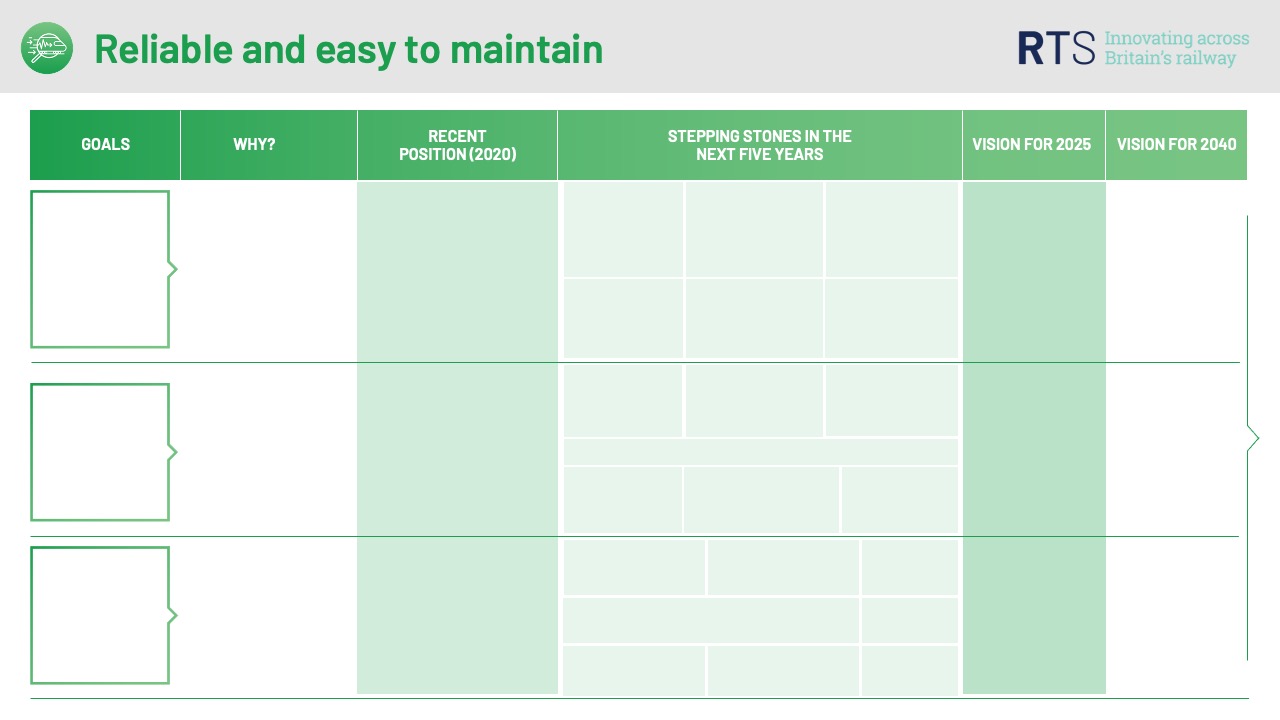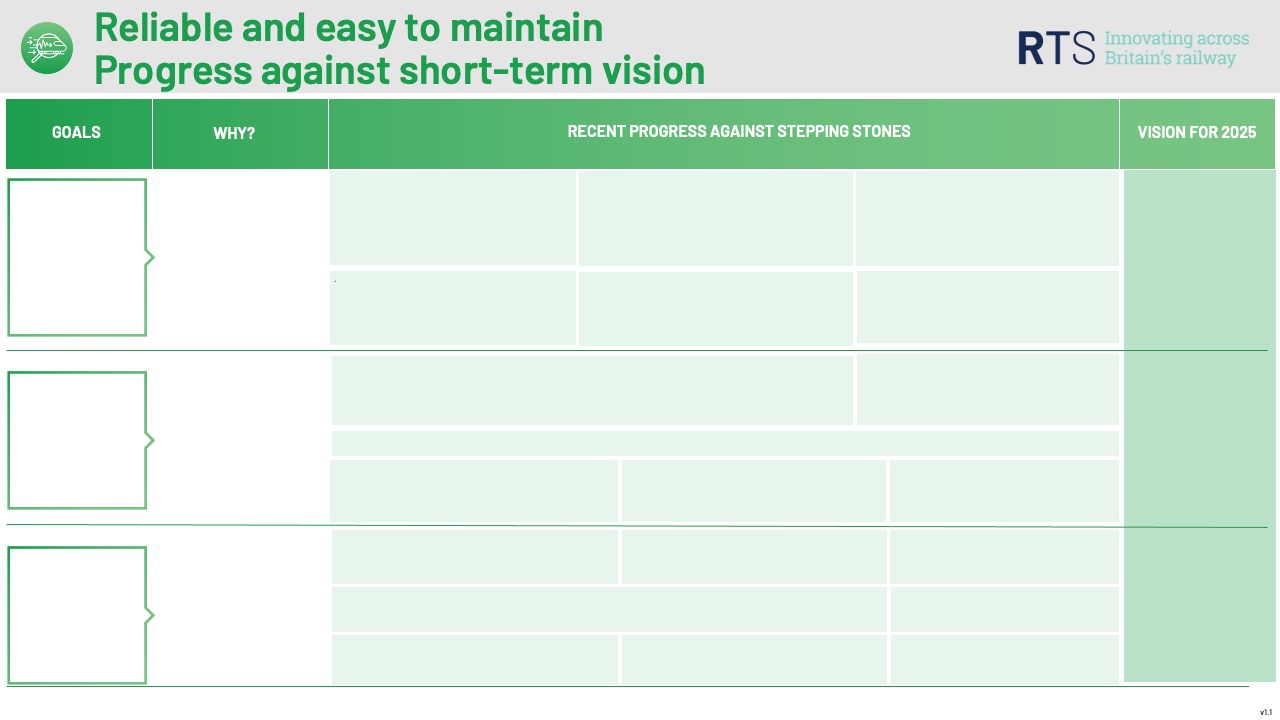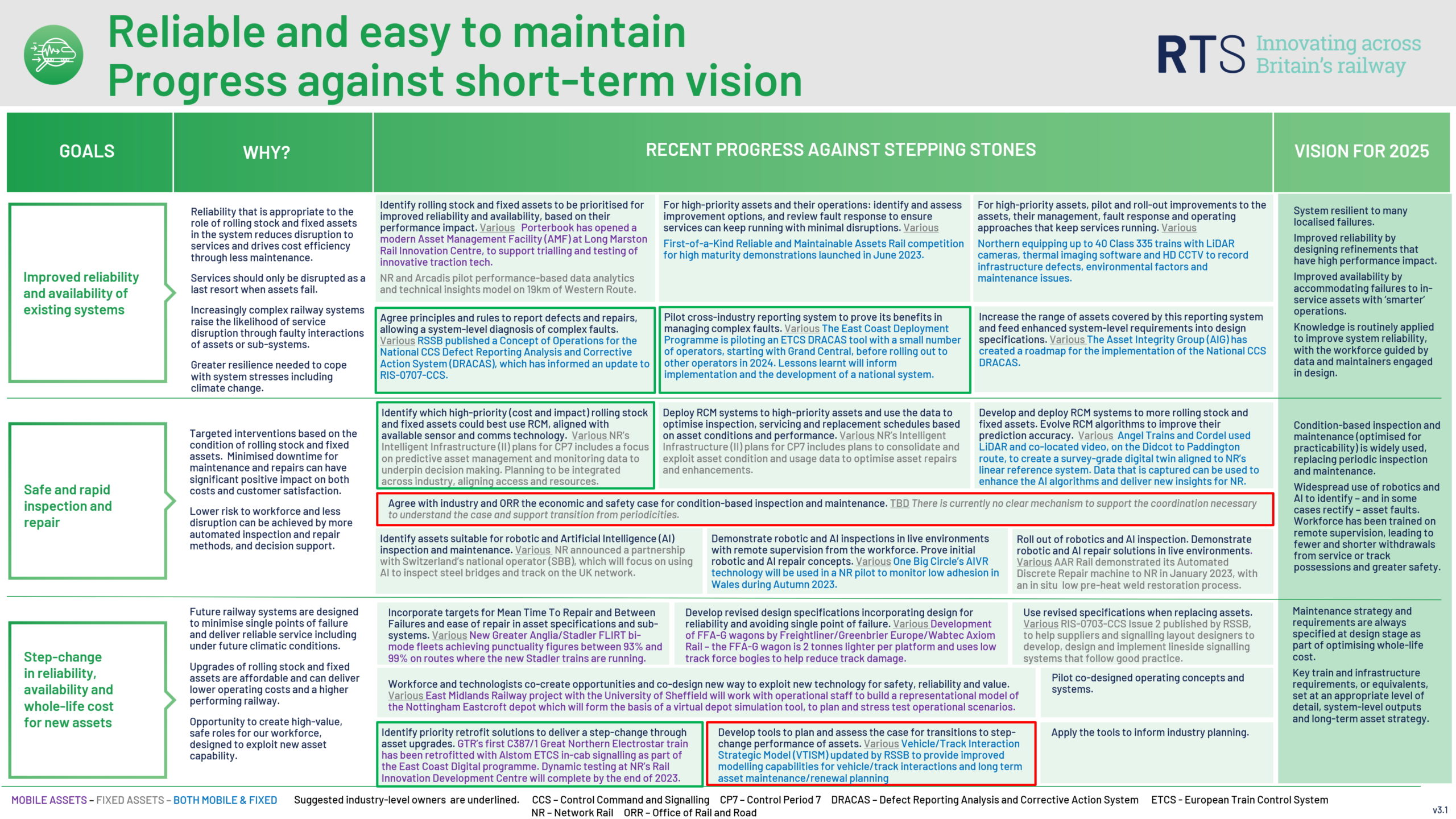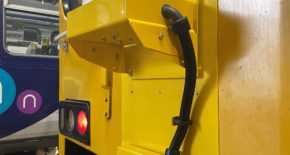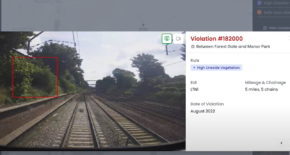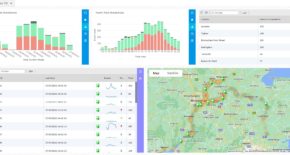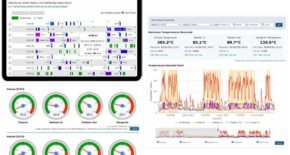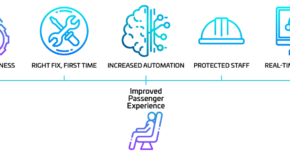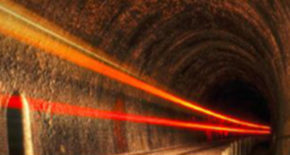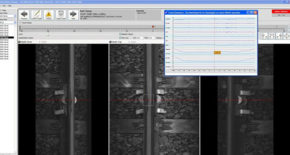
Reliability and availability will be maximised by design, remote and automatic inspection, and targeted interventions, while whole-life cost is reduced.
More reliable assets needing less out-of-service time are key to increased customer confidence and demand. Lower whole-life asset costs and increased understanding of how humans and machines can best work together, will help establish a thriving sector.
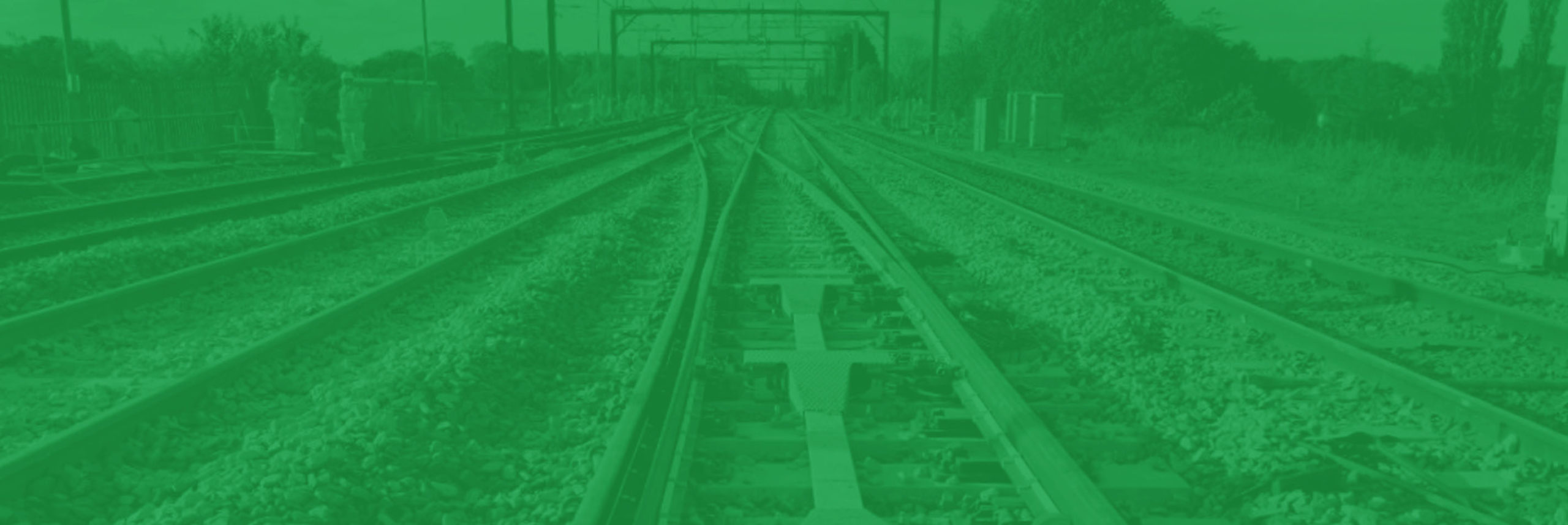
The functional priority routemaps highlight the steps needed in the next few years to ensure that new technical solutions can underpin progress towards the key goals. You can explore the latest version of the routemap below and also read about progress to date against the stepping stones.
 Select the routemap or progress update, then hover over the image to zoom in / out.
Select the routemap or progress update, then hover over the image to zoom in / out.
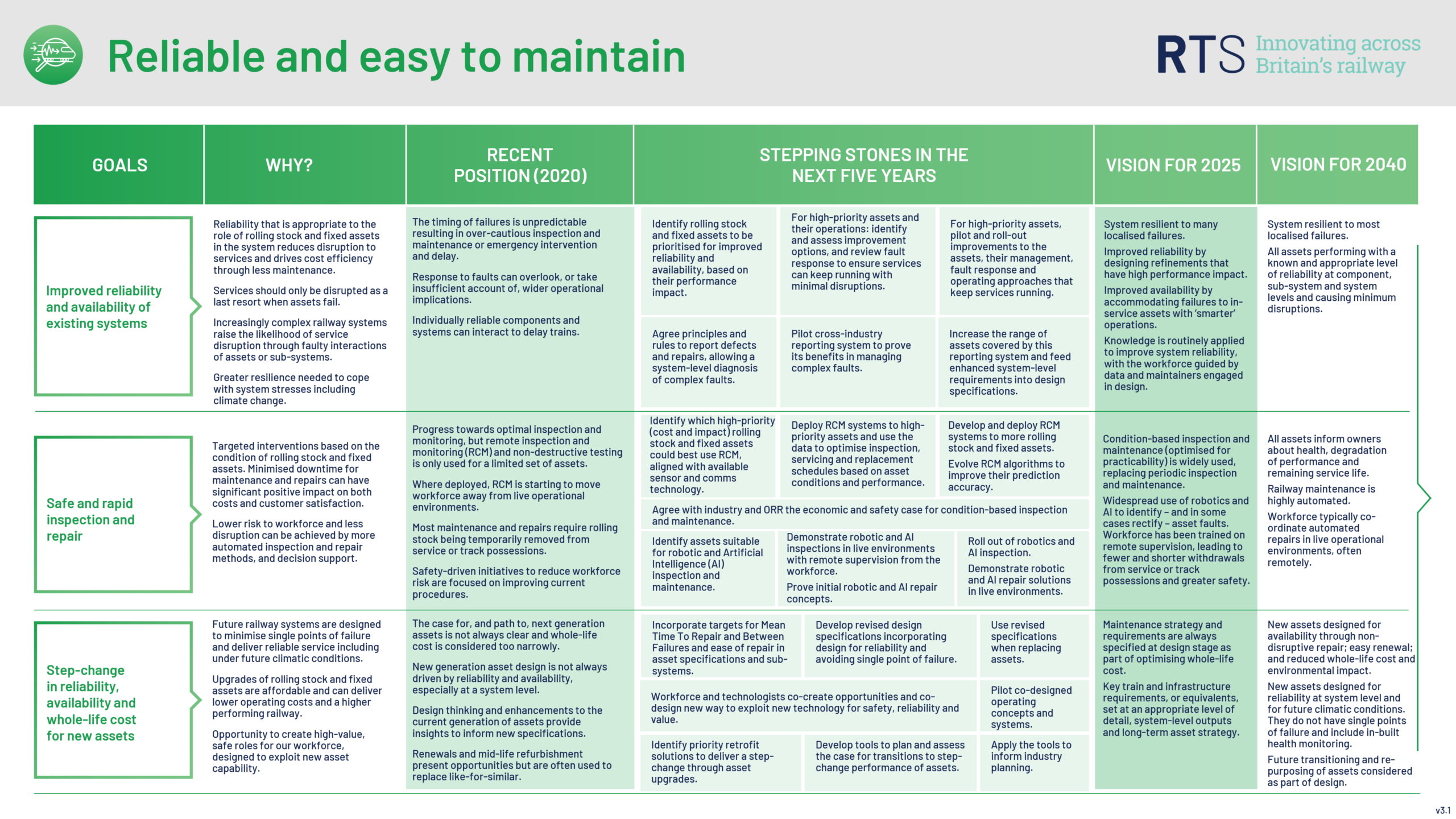
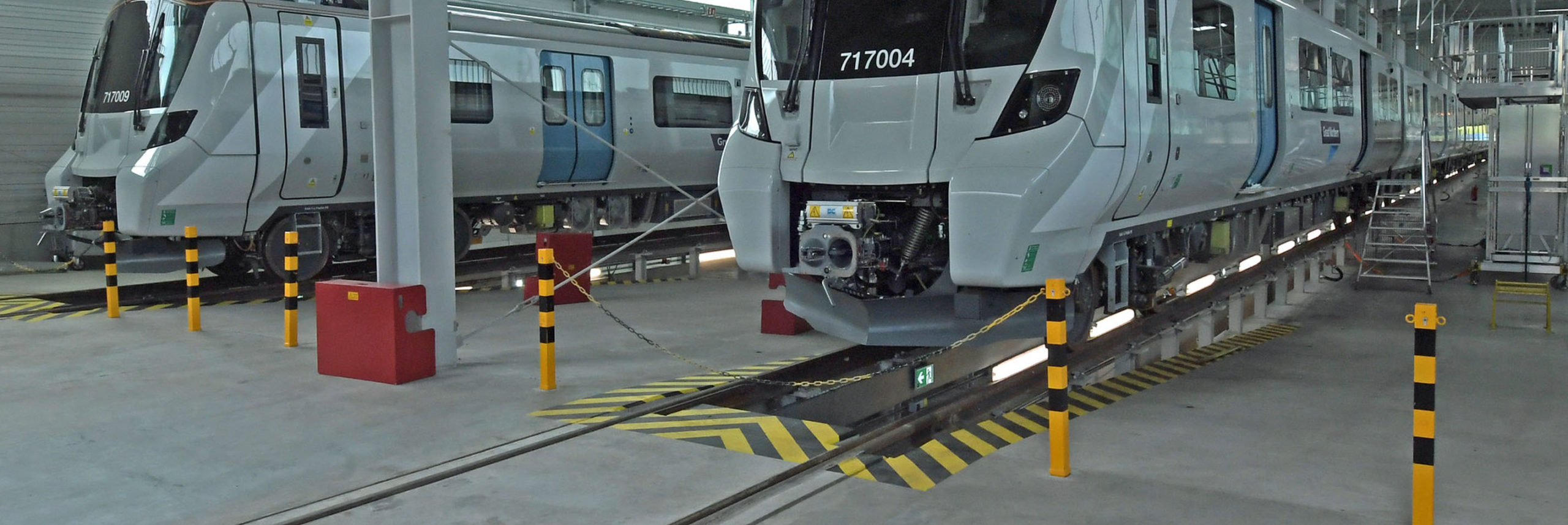
Who is doing what?
Many research and innovation activities support progress towards the goals set out for this priority. Visibility of these is essential to enable greater collaboration and increase the likelihood of success. This is why the RTS puts a spotlight on a selection of these activities, enables you to download the full list of activities of which we are aware, and invites you to add to this picture by sharing your own work.
Share what you are working on
Help keep the industry up to date with progress by sharing your research and innovation activities that are relevant to this priority.





